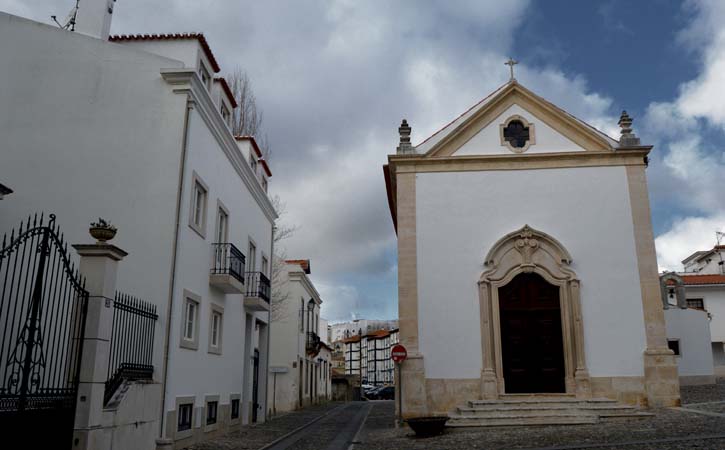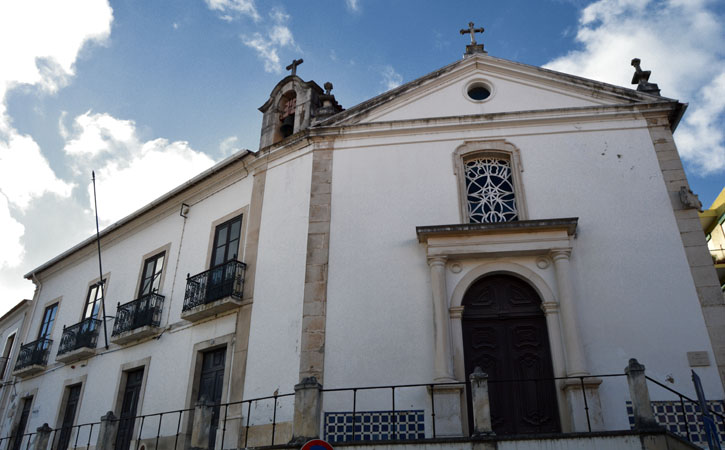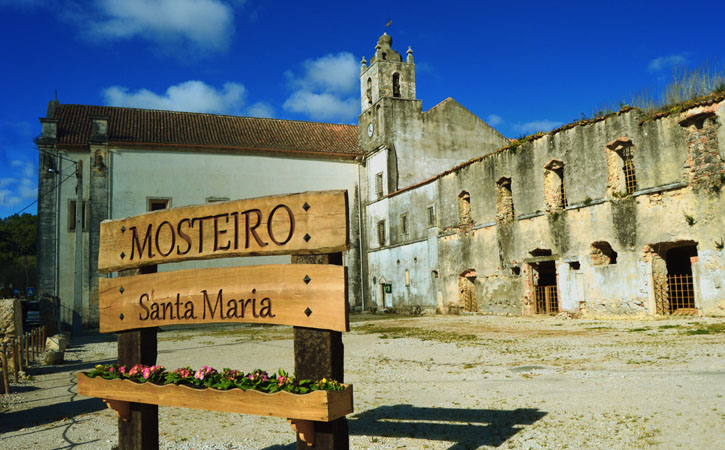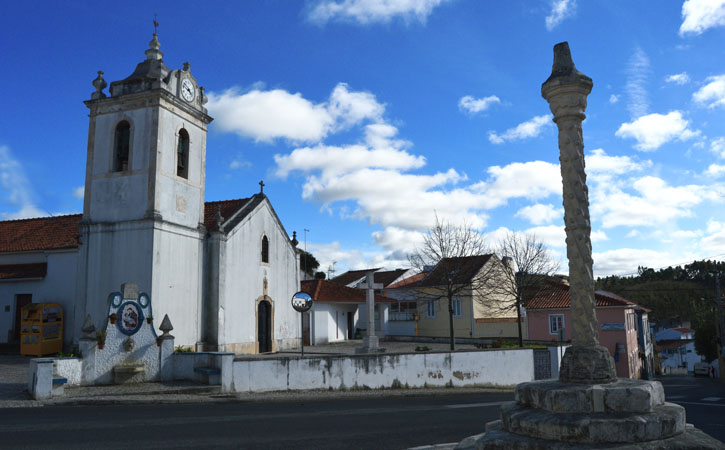Alcobaça Religious Heritage: Churchs and Monasteries
Discover here more about our Alcobaça Religious Heritage. All about the spots who made Portuguese history alive.
Nossa Senhora da Conceição Chapel
The Nossa Senhora da Conceição Chapel in Alcobaça dates back to 1648, although it is not the original construction of that place, since since 1152 there was a first gathering there, the Church of Santa Maria a Velha, for the Cistercian monks, even before the opening. of the Monastery of Alcobaça, whose construction took place 1153-54 and 1223-25.
It is therefore an important testimony to the history of Alcobaça, namely because of the antiquity of the place where it is built, having had a previous occupation to the Monastery.
The construction of Nossa Senhora da Conceição Chapel in 1648 must have occurred due to the degradation of the previous one, thus motivating the construction of a completely new temple.
The importance of the Chapel is also safeguarded with the classification as a Public Interest Building since 1959 and is one of the places where the heritage and local identity are best expressed.
As Alcobaça is a city with connections to the Cistercian Order, with its magnificent Monastery as the central point of that connection, the fact that the Chapel o is built in the place where the Cistercian Monks were first housed is still an important testimony of this connection to Cistercian.
See more+
Misericórdia Church
Built in 1520 the Misericórdia Church in Alcobaça is another important example of the religious heritage of the municipality.
There is nothing left of the primitive building since it was totally devastated in 1563 as a result of an earthquake that would require the total rebuilding of the Church in city.
In the following century, two fires also contributed to the Church suffering more interventions that make the current building no longer exactly the same as the one that was rebuilt in the 17th century.
The austerity of the exterior of the Church is largely compensated by the richness of its interior where various decorative elements can be found, with the paintings and tile coverings covering some walls untied.
See more+
Alcobaça Monastery
Also known as the Royal Abbey of Santa Maria de Alcobaça, the Alcobaça Alcobaça is one of the most important examples of national religious architecture.
Adding several architectural styles ranging from the Gothic, Manueline, Mannerist or Baroque, the Monastery of Alcobaça is in itself a work of art.
It was founded in 1153 and was the second pantheon of the national monarchy and buried there, among others, D. Pedro I and D. Inês de Castro, whose tombs are also authentic works of art that deserve to be contemplated.
Its grandeur, architectural, artistic, religious and historical, generates pilgrimages of believers and simple curious, which make the Monastery and the city itself one of the most sought after national heritage destinations.
The Monastery has been classified as a National Monument since 1910 and since 1989 as a World Heritage Site by UNESCO, distinctions that serve as recognition for all the value of this impressive exemplary heritage.
Together with the Convento de Cristo, in Tomar and the Monastery of Batalha, it forms a Monumental ensemble of the region with the seal of UNESCO and which you must not miss.
See more+
São Vicente de Aljubarrota Church
The São Vicente de Aljubarrota church dates from 1549 and was built where a 13th-century chapel once existed, which was already in an advanced state of degradation.
The construction of the Church was an imposition of the local population who wished that Aljubarrota had two parishes, each with its own church.
After the will of the people, the Church was really a short-term reality although, in the 20th century, it was the target of profound external and internal intervention, complemented with new interventions in the 70’s of that century.
You can also complement the visit to the Church with a visit to the Center of Sacred Art of Aljubarrota and Nossa Senhora dos Prazeres Church which together form a heritage and museological route with a guided tour promoted by the Parish Council of Aljubarrota.
See more+
Nossa Senhora dos Prazeres Church
The Nossa Senhora dos Prazeres Church in Aljubarrota near Alcobaça is a religious temple from the 13th century, being the oldest church in the locality.
Its importance is linked to the legend that says the Constable D. Nuno Álvares Pereira, prayed in this chapel before the famous Battle of Aljubarrota of August 14, 1385, in which the Portuguese led by D. Nuno gloriously imposed themselves on the Castilians.
The Church was remodeled in the second half of the 16th century, undergoing new interventions in the 18th and 20th centuries, a situation that brings together several architectural styles.
The interior also cannot be overlooked for its artistic riches.
Is an important testimony of Aljubarrota not only for its antiquity but also for its historical importance, be sure to visit it, and you can enjoy the 1st Sunday of August and participate in the festivities in honor of Nossa Senhora dos Prazeres .
See more+
Santa Maria de Cós Monastery
The Santa Maria de Cós Monastery is built in the parish of Cós, one of the oldest of the ancient Coutos de Alcobaça.
Founded in the 12th century, the Monastery became one of the most important female monasteries of the Cistercian Order.
The Monastery has undergone interventions over the centuries, respecting the current composition of the church to the interventions of the 17th century.
The Church is, moreover, one of the few infrastructures that still resists today in the entire old complex of the Monastery.
Far from the exuberance of its original days and without the importance of the Monastery in Alcobaça is still the important testimony of the local heritage and identity, being one of the oldest complexes in the region.
This historical, social and cultural importance that the Monastery provides was consecrated with the classification of the building as a Property of Public Interest in 1946.
See more+
São Lourenço Parish Church
The São Lourenço Parish Church is another example of religious architecture that you can contemplate in the municipality of Alcobaça.
Dating from the 16th century, it was supposedly built by Cardinal D. Afonso, Abbot of Alcobaça and is related to a donation made by him.
Given its antiquity, the Church is a very important testimony to the identity and local heritage.
Later, in the 19th century, the Church was completely remodeled due to the state of degradation that it presented.
Since there is not much more information about the history of the Church , it remains for you to discover with your eyes the virtues it has to offer.







